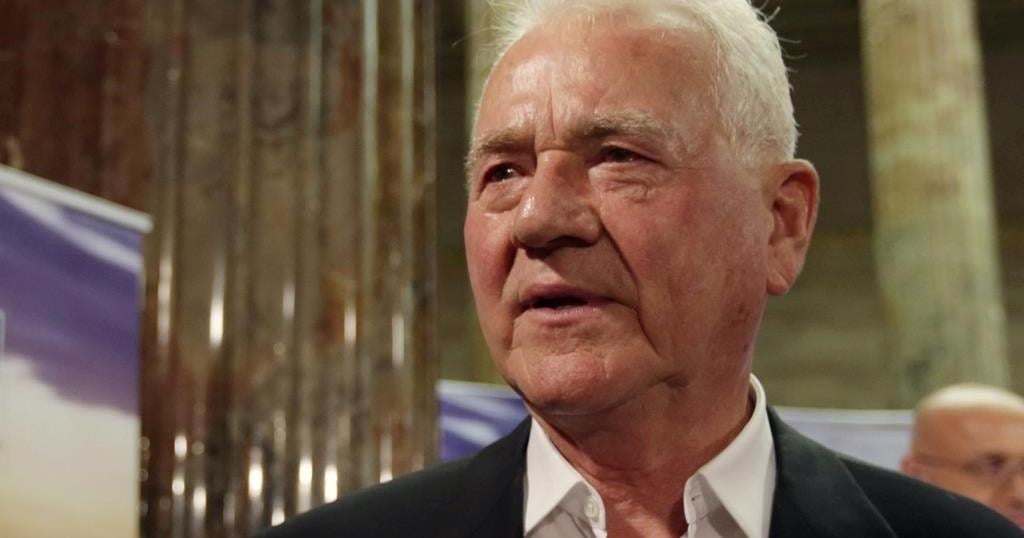Here is a roundup of stories from The Canadian Press designed to bring you up to speed…
Frank Stronach case due in court today
A hearing is scheduled in Brampton, Ont., court today in the case of billionaire businessman Frank Stronach, who is accused of sexually assaulting 10 complainants.
Stronach, who is 91, was first charged last month with five sex-related offences involving three complainants, soon followed by another eight charges involving seven complainants.
Court documents show the charges include rape, attempted rape, indecent assault, forcible confinement and sexual assault.
They relate to alleged incidents dating as far back as 1977 and as recently as this year.
Stronach’s lawyer Brian Greenspan has said that his client denies all allegations against him and plans to “vigorously” defend his reputation.
Here’s what else we’re watching…
Votes for change abroad offer lessons for Canada
Prime Minister Justin Trudeau turned heads internationally in 2021 when he called a snap election during the COVID-19 pandemic.
It was a gamble to try and secure a Liberal majority at a time when much seemed uncertain, and though the gamble failed, Canadians handed Trudeau a second and slightly stronger minority mandate.
In the last week alone, anti-incumbent sentiment as taken down two G7 governments.
On Sunday, France President Emmanuel Macron bet his centrist alliance on a snap vote and lost, though the risky manoeuvre appears to have thwarted the rise of a far-right party in that country.
In the United Kingdom, Rishi Sunak’s Conservative Party was trounced in last week’s unusual July vote. The party that had led Britain for 14 years was reduced to Official Opposition, with Keir Starmer’s Labour taking 412 of 650 seats in Parliament.
Joly to meet with new British counterpart
Foreign Affairs Minister Mélanie Joly is expected to meet with her new British counterpart for the first time since the Labour Party took power in the United Kingdom last week.
Joly is in London for her meeting with David Lammy, who was recently appointed Secretary of State for Foreign, Commonwealth and Development Affairs.
The massive shift in the political landscape in Britain last week saw the Conservative government ousted after 14 years in power.
The change has revived some hopes in Canada for a free-trade deal with the U.K., and Joly’s office expects her conversation with Lammy to include ways to “deepen bilateral relations” between the countries.
The two also plan to exchange views on transatlantic security, support for Ukraine and the war in the Middle East.
Canada’s longest river at record low levels
Canada’s longest river is at historically low levels, stranding communities that rely on it for essential goods and alarming First Nations along its banks who have never known the mighty Mackenzie to be so shallow.
From Great Slave Lake to the Beaufort Sea, the Mackenzie River is 1,738 kilometres long. Its watershed covers parts of five provinces and territories.
But the Northwest Territories government reports flow rates at most locations along the river are either well below average or at their lowest recorded value for this time of year.
Water levels are about two metres below average, said territorial hydrologist Ryan Connon. Normal seasonal fluctuations are about 50 centimetres.
That drop is even more dramatic, because two years ago rivers and lakes in the Mackenzie system were at all-time highs.
Island purchase protects Fraser River salmon
An important salmon habitat will be protected after the multimillion-dollar purchase of an island in British Columbia’s lower Fraser River by an environmental organization, with the help of the federal government and private donors.
The Nature Conservancy of Canada announced the purchase of 248-hectare Carey Island near Chilliwack, in an important ecological area between Mission and Hope known to conservationists as “the Heart of the Fraser.”
The previous owners, Carey Island Farms Ltd., were using the island to grow corn.
The conservancy says Carey Island is one of the Fraser’s last salmon habitat strongholds, providing gravel channels for spawning and rearing areas for salmon and other species, including endangered sturgeon.
It says Carey Island is vital for salmon because it’s one of the few privately held areas of the Fraser where salmon habitat is undisturbed by the digging of dikes and ditches to prevent flooding.
This report by The Canadian Press was first published July 8, 2024.
